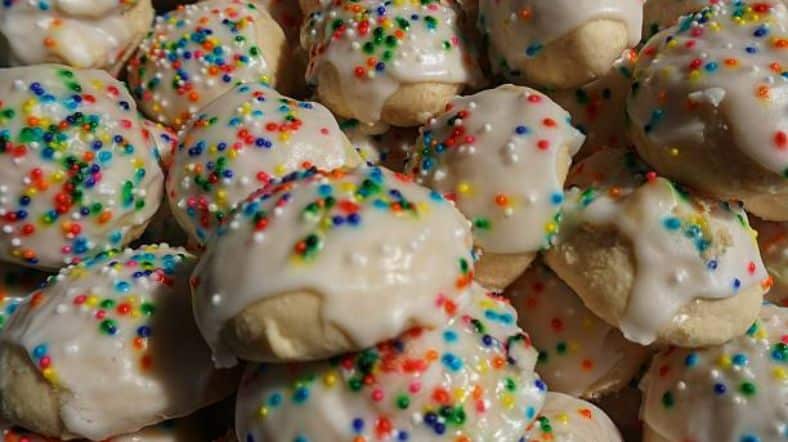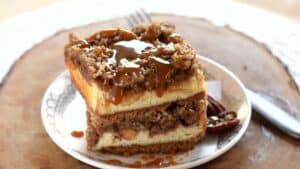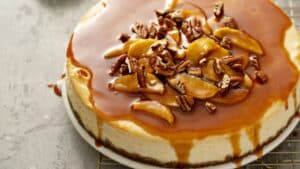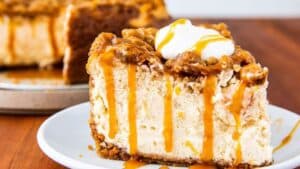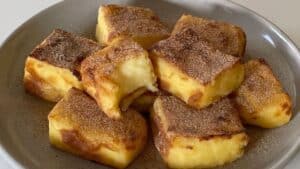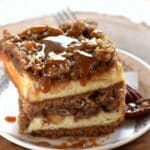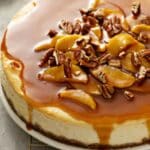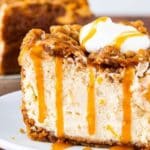The holidays sneak up like a cinnamon-scented whisper, don’t they? One minute you’re sweating through September, the next you’re elbow-deep in icing sugar and humming “Jingle Bells” without realising it. Christmas is a mood, not a date. And nothing captures that mood better than the sweet, dense magic of Christmas Cake Batter Fudge. It’s not just dessert it’s nostalgia and innovation packed into a silky square.
Now, if you’re here, you’re not the average home cook scouring Pinterest. You want depth. You want technique. You want to know why your fudge split, why the texture turned gritty, and why your Aunt Margaret’s version was weirdly perfect despite using margarine from 1992. So let’s get into it—this is your definitive, expert-level dive into Christmas Cake Batter Fudge.
The Alchemy Behind the Fudge
Fudge is more chemistry than cookery. Cake batter fudge? Even more so. What we’re doing here is engineering emotion using sugar’s molecular behavior and fat’s emulsifying power to build a confection that triggers childhood memories while holding its own on a Michelin-tier dessert board.
At its core, fudge is a crystallized sugar candy. But not just any sugar crystal formation—what we’re aiming for is microcrystalline. Tiny crystals. Ones that dissolve instantly on the tongue. Big sugar crystals? They ruin everything. That grainy texture you remember from that one Christmas when everything went wrong? That’s lazy sugar work.
To avoid that, temperature control is king. Classic fudge requires you to heat your mixture to the “soft-ball” stage about 234°F to 240°F (112°C to 116°C)—then beat it until it thickens and becomes creamy. But cake batter fudge cheats a bit. And honestly? That’s not a bad thing. We lean on sweetened condensed milk and white chocolate to do some of the heavy lifting.
But let’s be real: The science still matters. You can’t just chuck it all in a pot and pray to Mary Berry. Emulsification, heat distribution, fat ratios—all these things count. A pro understands the shortcut, sure. But they also understand what the shortcut is bypassing.
Christmas Cake Meets Batter Fudge: A Textural Tango
So why marry Christmas cake and fudge?
Simple answer: texture and nostalgia.
Christmas cake—especially the British-style fruitcake—is dense, spiced, sometimes boozy, and chock-full of dried fruits, nuts, and sometimes glacé cherries that should’ve been banned decades ago but somehow keep showing up. It’s complex. It’s divisive. Some people love it, others fake allergies to avoid it.
Now, cake batter fudge leans in a totally different direction. It’s soft. Creamy. Sweet enough to tickle teeth. So when we combine them, we’re balancing heritage with hedonism. You’re softening the intensity of fruitcake with the gentleness of fudge while still preserving that unmistakable holiday flavor profile.
Here’s what needs to happen:
- You need a base fudge mixture—typically white chocolate + condensed milk + butter.
- You fold in cake mix—not too much. Just enough to invoke that sweet, vanillin-rich batter aroma.
- Spices matter: cinnamon, nutmeg, allspice. Don’t go overboard. You’re not embalming it.
- Then the kicker—dried fruits soaked in brandy, or better yet, rum. And I mean soaked. Overnight, minimum. You want them plump, not chewy.
- Optional but game-changing: a splash of almond extract, a pinch of salt, and roasted pecans or walnuts for bite.
It’s a layered experience. The fruit and nuts break up the smoothness, offering chew and crunch. The spices warm the palate. And the fudge? It’s the velvet backdrop tying it all together.
Real World Application: Scaling for Sale
Let’s talk volume. Let’s talk commercial kitchens. If you’re producing fudge in quantity for Christmas markets, boutique shops, or high-end clients, consistency is non-negotiable.
Batch cooking fudge is tricky. Sugar behavior changes when scaled. So does the heat retention of pans. A small misstep can cost you kilograms of waste. Professional kitchens rely on:
- Copper pans for even heat distribution.
- Marble slabs for controlled cooling and beating.
- Digital thermometers (old-school bulb ones are charming but mostly useless at scale).
- Controlled humidity rooms, if you’re serious. Fudge and moisture are frenemies.
Consistency also means your fruit soak ratios have to be measured to the gram. Your cake mix should be sifted. And your white chocolate? Use couverture. Don’t cheap out with supermarket blocks that contain stabilizers and low cocoa butter content. They won’t melt clean, and they’ll throw off your emulsification.
Shelf stability is another professional concern. Fudge is hygroscopic—it pulls moisture from the air. This can lead to weeping or texture breakdown. So wrap it tight. Use wax paper, vacuum seal, or flow wrap it if you’re shipping.
Pro tip: If you’re selling this, offer mini mixed trays with contrasting flavors. Christmas Cake Batter Fudge plays well with cranberry-pistachio, peppermint bark, and spiced ginger fudge. A good fudge board is like a cheese board—diverse textures, balanced sweetness, visual appeal.
Debunking Myths & Misconceptions
Let’s bust a few myths while we’re at it.
Myth 1: You have to cook fudge to the soft-ball stage.
False. For traditional fudge, yes. For modern variants like cake batter fudge, you can bypass this by using chocolate and condensed milk. It’s about balance, not rules.
Myth 2: You can use any cake mix.
Nope. The quality of the cake mix affects flavor and texture. Cheap mixes taste synthetic and overly sweet. Go for vanilla or yellow cake mixes with a balanced fat content.
Myth 3: Christmas cake fudge is too rich.
Well yeah, it’s rich. But that’s the point. The trick is in the portioning. Use small silicone molds or cut tiny squares. A good piece of fudge should be a one-bite indulgence, not a meal replacement.
Emerging Trends: What’s Next for Fudge?
Gourmet fudge is having a bit of a moment. Pop-up confectioners, online dessert boutiques, and even Michelin restaurants are embracing the medium. Why? Because it’s nostalgic, versatile, and ridiculously Instagrammable.
Christmas Cake Batter Fudge is becoming a playground for experimentation:
- Dehydrated eggnog powder added to the base for complexity.
- Brown butter instead of plain for nutty depth.
- Edible gold leaf, because if you’re charging £8 a square, you better make it sparkle.
- Vegan versions, using coconut condensed milk and dairy-free white chocolate. Texturally different, but surprisingly good if done right.
Expect to see more regional fusions too. Panettone fudge. Stollen fudge. Black cake fudge from the Caribbean, laced with burnt sugar and port. Each one tells a cultural story. And that’s what Christmas food should do—connect memory, place, and celebration.
The Fine Print: Nutritional and Storage Considerations
Look, it’s fudge. It’s not a health food. But that doesn’t mean you shouldn’t be informed.
A standard 1-inch square of Christmas Cake Batter Fudge clocks in at about 90–120 calories, depending on the fat and sugar content. It’s high in carbs and fats, obviously. That’s the point.
Storage-wise, fudge is best kept in an airtight container at a cool room temp. Fridges can dry it out. Freezing works—but only if wrapped in parchment and foil, then ziplocked. Thaw slowly. Never microwave. You’ll ruin the texture faster than you can say “yule log.”
Expert Takeaways and Recommendations
Let’s recap, sharp and fast:
- Use real white chocolate. The expensive stuff. It pays off.
- Soak your fruit. Overnight. Non-negotiable.
- Salt matters. Even in fudge. Especially in fudge.
- Don’t skip the almond extract. It unlocks that ‘cake batter’ vibe.
- Portion small. Richness is the feature, not the flaw.
- If scaling, test your ratios obsessively. Keep logs. Batch consistency is king.
And finally don’t be afraid to riff. Add orange zest. Try dark chocolate swirls. Sprinkle sea salt on top. Make it yours. Christmas food doesn’t need to be perfect. It just needs to be memorable.
Because in the end, this isn’t just fudge. It’s a tiny square of holiday joy, made by hand, and eaten slowly hopefully with sticky fingers and a smile.
Happy stirring.
